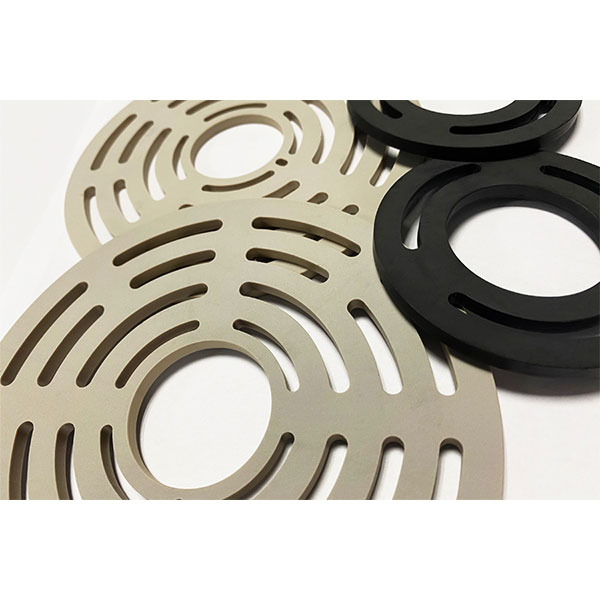Compressor valve manufacturer tells you the reasons and solutions for the damage to the compressor valve plate
In this article, the compressor valve manufacturer will tell you the reasons for the damage of the compressor valve plate and the solutions.

(1) The valve plate is damaged
reason:
a) Fatigue damage - because the valve plate is subjected to frequent impact loads and bending alternating loads, the valve plate is prone to fatigue damage. The actual use proves that the main failure form of the valve plate is the radial fracture caused by the impact load;
b) Wear of the valve plate—the friction and wear between the annular valve plate and the working surface of the guide block can weaken the strength of the valve plate and reduce the service life. When the amount of wear is too large, the valve plate may be stuck on the guide block or lose its sealing effect. The rotation of the annular valve plate during work will cause the edge of the valve plate to grind;
c) Material defects of the valve plate—defects such as material slag inclusions, interlayers, cracks, etc. cause the stress concentration of the valve plate, which becomes the source of fatigue damage under the action of cyclic loads. Therefore, the early wear rate of the new valve plate is relatively high, and the valve plate with a service life of more than 1000h has a high service life;
d) Medium corrosion - the compression medium itself is corrosive or the medium contains moisture, the valve plate is washed away during work, the protective film on the surface of the valve plate is destroyed, and corrosion pits and cavities appear in some parts of the valve plate, causing stress concentration and corrosion fatigue destroy.
(2) The air valve spring is damaged
reason:
a) The spring changes from the pre-compression force to the maximum compression force from the valve plate fully closed to fully open, and bears the pulsating cyclic load, causing fatigue damage;
b) When the spring is deformed, friction and wear will occur with the wall of the spring hole, and the strength will decrease and break;
c) The medium corrodes the surface of the spring, resulting in pits and pits, causing stress concentration and accelerating the fatigue damage of the spring;
d) The manufacturer of the compressor valve warmly reminds us that the material does not meet the requirements, and the processing and heat treatment of the spring is defective.
(2) Leakage of the air valve
Compressor valve manufacturers tell you what causes damage:
a) The sealing surface of the valve seat is uneven, and the surface roughness does not meet the requirements;
b) The sealing surface is damaged;
c) The valve plate is deformed and broken;
d) There is foreign matter stuck in the valve gap channel;
e) The gas temperature is high, and the lubricating oil is easy to turn into carbon residue and gets stuck on the sealing surface. For petroleum gas compressors, the higher the temperature and pressure, the more serious the carbon deposition of the polymer, and the carbon residue sticks to the valve plate and valve seat, causing the air valve to leak;
f) The spring force is too small;
g) The end face of the spring is not perpendicular to the axis;
h) The valve seat and valve plate are severely worn.
The compressor valve manufacturer tells you the solution after the compressor valve plate is damaged:
When overhauling the valve plate, the fastening bolts of the cylinder head should be removed first (that is, the valve group can be disassembled). If the cylinder head, valve plate, gasket, etc. cannot be removed due to adhesion, the cylinder head can be lightly tapped with a small hammer. Remove it after loosening (do not damage the sealing gasket). After opening, measure and write down the gap between the top dead center of the piston and the top surface of the cylinder and the thickness of the sealing gasket on the top surface of the cylinder, so as to keep the original clearance unchanged when reassembling.
After further inspection, if the valve plate is found to be deflected, deformed, or broken, it should be replaced and cannot be repaired. The new valve plate should be of the same model and specification as the original manufacturer, and it cannot be substituted arbitrarily. If there is no new valve plate, it can be considered to use the valve plate strip steel to make it by itself, and it is never allowed to replace it with ordinary steel. The self-made valve plate must be flat, and the burrs and cut marks on the edge must be polished. The surface roughness must be ground to meet the requirements.





